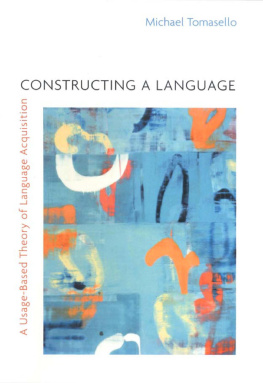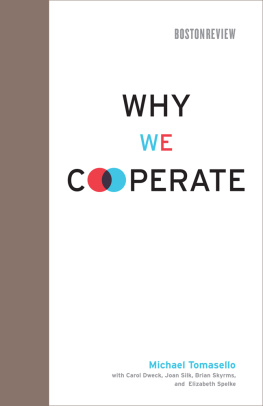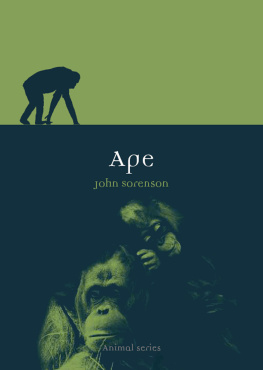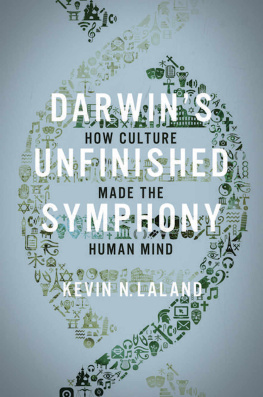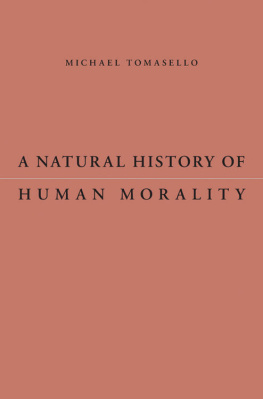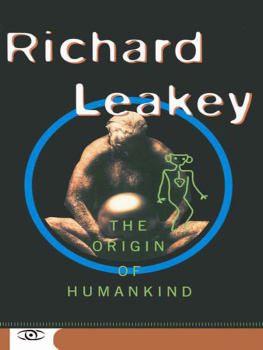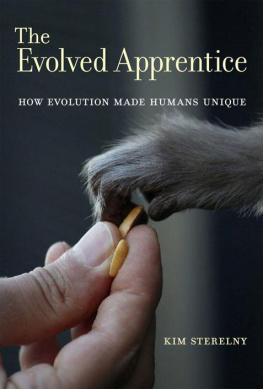A Natural History of Human Thinking
A Natural History of Human Thinking

Michael Tomasello

Harvard University Press
Cambridge, Massachusetts
London, England
2014
Copyright 2014 by the President and Fellows of Harvard College
All rights reserved
Jacket design by Tim Jones.
The Library of Congress has cataloged the printed edition as follows:
Tomasello, Michael.
A natural history of human thinking / Michael Tomasello.
pages cm
Includes bibliographical references and index.
ISBN 978-0-674-72477-8 (hardcover : alk. paper)
1. CognitionSocial aspects. 2. Evolutionary psychology. 3. Psychology, Comparative. I. Title.
BF311.T6473 2014
153dc23 2013020185
For Rita, Anya, Leo, and Chiara
Contents
This book is a sequelor, better, a prequelto The Cultural Origins of Human Cognition (Harvard University Press, 1999). But it also has a slightly different focus. In the 1999 book the question was what makes human cognition unique, and the answer was culture. Individual human beings develop uniquely powerful cognitive skills because they grow to maturity in the midst of all kinds of cultural artifacts and practices, including a conventional language, and of course they have the cultural learning skills necessary to master them. Individuals internalize the artifacts and practices they encounter, and these then serve to mediate all of their cognitive interactions with the world.
In the current book, the question is similar: what makes human thinking unique? And the answer is similar as well: human thinking is fundamentally cooperative. But this slightly different question and slightly different answer lead to a very different book. The 1999 book was clean and simple because the data we had comparing apes and humans were so sparse. We could thus say things like Only humans understand others as intentional agents, and this enables human culture. But we now know that the picture is more complex than this. Great apes appear to know much more about others as intentional agents than previously believed, and still they do not have human-like culture or cognition. Based on much research reported here, the critical difference now seems to be that humans not only understand others as intentional agents but also put their heads together with others in acts of shared intentionality, including everything from concrete acts of collaborative problem solving to complex cultural institutions. The focus now is thus less on culture as a process of transmission and more on culture as a process of social coordinationand indeed, we argue here that modern human cultures were made possible by an earlier evolutionary step in which individuals made a living by coordinating with others in relatively simple acts of collaborative foraging.
The specific focus on thinking means that this book does not simply document that humans participate in shared intentionality in a way that their nearest primate relatives do not, which has been done elsewhere. Rather, in addition, it examines the underlying thinking processes involved. To describe the nature of these thinking processesin particular, to distinguish human thinking from that of other apeswe must characterize its component processes of cognitive representation, inference, and self-monitoring. The shared intentionality hypothesis claims that all three of these components were transformed in two key steps during human evolution. In both cases, the transformation was part of a larger change of social interaction and organization in which humans were forced to adopt more cooperative lifeways. In order to survive and thrive, humans were forced, twice, to find new ways to coordinate their behavior with others in collaborative (and then cultural) activities and to coordinate their intentional states with others in cooperative (and then conventional) communication. And this transformed, twice, the way that humans think.
The writing of this book, as most others, was made possible by the support of many institutions and people. I would like to thank the University of Pittsburgh Center for Philosophy of Science (John Norton, director and seminar leader extraordinaire) for hosting me for one peaceful semester of concentrated writing in the spring of 2012. I especially benefited during this stay from Bob Brandoms generosity with his time and thoughts on many topics central to the current enterprise. I thank Celia Brownell at the Pitt Department of Psychology and Andy Norman at Carnegie Mellon for many useful discussions during this semester as well. The ensuing summer I benefited greatly from presenting the themes of the book to the SIAS Summer Institute titled The Second Person: Comparative Perspectives , organized in Berlin by Jim Conant and Sebastian Rdl. The book is better for all of these encounters.
With regard to the manuscript itself, I would like to thank Larry Barsalou, Mattia Galloti, Henrike Moll, and Marco Schmidt for reading various chapters and providing very useful feedback. Of special importance, Richard Moore and Hannes Rakoczy each read the entire manuscript at a fairly early stage and provided a number of trenchant comments and suggestions, regarding both content and presentation. Thanks also to Elizabeth Knoll and three anonymous reviewers at Harvard University Press for a number of helpful comments and criticisms on the penultimate draft.
Last and most important, I thank my wife, Rita Svetlova, for providing constant and detailed critical commentary and suggestions throughout. Many ideas were made clearer through discussion with her, and confusing passages were made clear, or at least clearer, by her literate eye.
Only cooperation constitutes a process that can produce reason.
JEAN PIAGET, SOCIOLOGICAL STUDIES
Thinking would seem to be a completely solitary activity. And so it is for other animal species. But for humans, thinking is like a jazz musician improvising a novel riff in the privacy of his own room. It is a solitary activity all right, but on an instrument made by others for that general purpose, after years of playing with and learning from other practitioners, in a musical genre with a rich history of legendary riffs, for an imagined audience of jazz aficionados. Human thinking is individual improvisation enmeshed in a sociocultural matrix.
How did this novel form of socially infused thinking come to be, and how does it work? One set of classic theorists has emphasized the role of culture and its artifacts in making possible certain types of individual thinking. For example, Hegel (1807) argued that the social practices, institutions, and ideologies of a particular culture at a particular historical epoch constitute a necessary conceptual framework for individual human reason (see also Collingwood, 1946). Peirce (19311935) claimed more specifically that virtually all of humans most sophisticated types of thinking, including most especially mathematics and formal logic, are possible only because individuals have available to them culturally created symbolic artifacts such as Arabic numerals and logical notation. Vygotsky (1978) emphasized that human children grow up in the midst of the tools and symbols of their culture, including especially the linguistic symbols that preorganize their worlds for them, and during ontogeny they internalize the use of these artifacts, leading to the kind of internal dialogue that is one prototype of human thinking (see also Bakhtin, 1981).
The other set of classic theorists has focused on the fundamental processes of social coordination that make human culture and language possible in the first place. Mead (1934) pointed out that when humans interact with one another, especially in communication, they are able to imagine themselves in the role of the other and to take the others perspective on themselves. Piaget (1928) argued further that these role-taking and perspective-taking abilitiesalong with a cooperative attitudenot only make culture and language possible but also make possible reasoning in which individuals subordinate their own point of view to the normative standards of the group. And Wittgenstein (1955) explicated several different ways in which the appropriate use of a linguistic convention or cultural rule depends on a preexisting set of shared social practices and judgments (forms of life), which constitute the pragmatic infrastructure from which all uses of language and rules gain their interpersonal significance. These social infrastructure theorists, as we may call them, all share the belief that language and culture are only the icing on the cake of humans ultrasocial ways of relating to the world cognitively.
Next page

